Recently updated on March 3rd, 2025 at 12:00 pm
Morocco is an enchanting land of medinas, markets, mosques and the famous Sahara Desert. Whether you want to explore the medieval streets of Fez or follow the path of a thousand kasbahs to the Dades Valley, there are a few things you’ll need to know before you go. We’ve put together a guide with our best Morocco travel tips including where to go, what to eat, what to wear and important cultural customs in Morocco.
Best places visit in Morocco
Casablanca
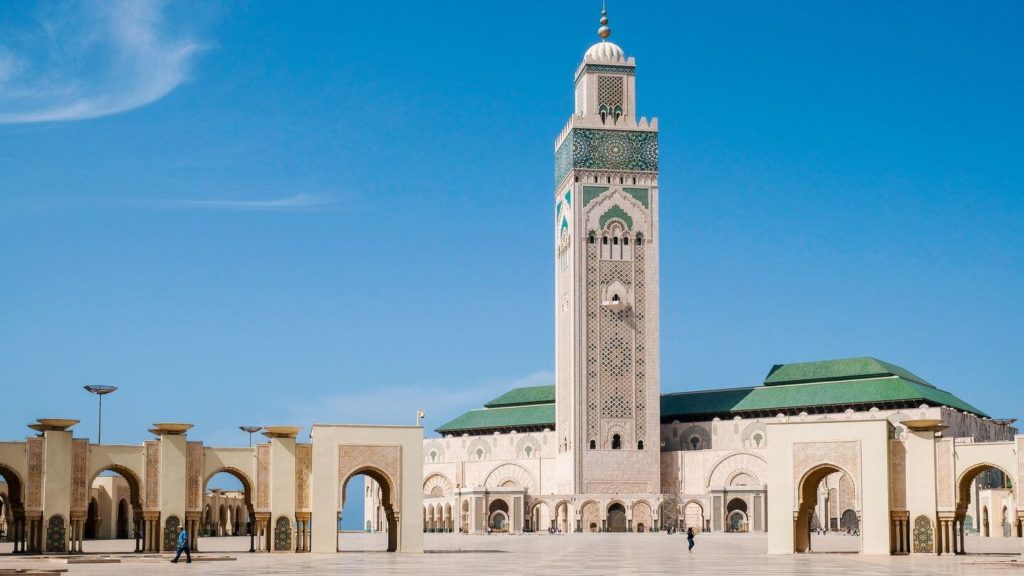

Dive into the romance and mystery of Casablanca, a city made famous by Hollywood. The city’s traditional Arab culture mixed with remnants from the French colonial period makes for an interesting blend of art deco buildings, regal palaces and old stone medinas.
Don’t miss the iconic Hassan II Mosque, the second-largest mosque in the world, and one of few open to non-Muslims. You can also wander the beachfront district of La Corniche and see the grand King’s Palace. Explore fascinating museums like the unique Museum of Moroccan Judaism, and experience the daily life of locals in the maze of alleyways in the Old Medina.
Fez


You can’t miss Fez when you visit Morocco. As the country’s oldest imperial city, Fez is famed for its unique character and rich culture. See the royal palace or go exploring in Medina, one of the largest medieval centres in the world.
Visit the colourful dye-pits and tanneries to learn about Morocco’s ancient leathercraft. We’ll even take you to a special dining experience in a traditional Riad. You’ll sample fine Moroccan food and wine and enjoy live bands and traditional entertainment like belly dancing.
GET INSPIRED BY: Best of Morocco
Marrakesh
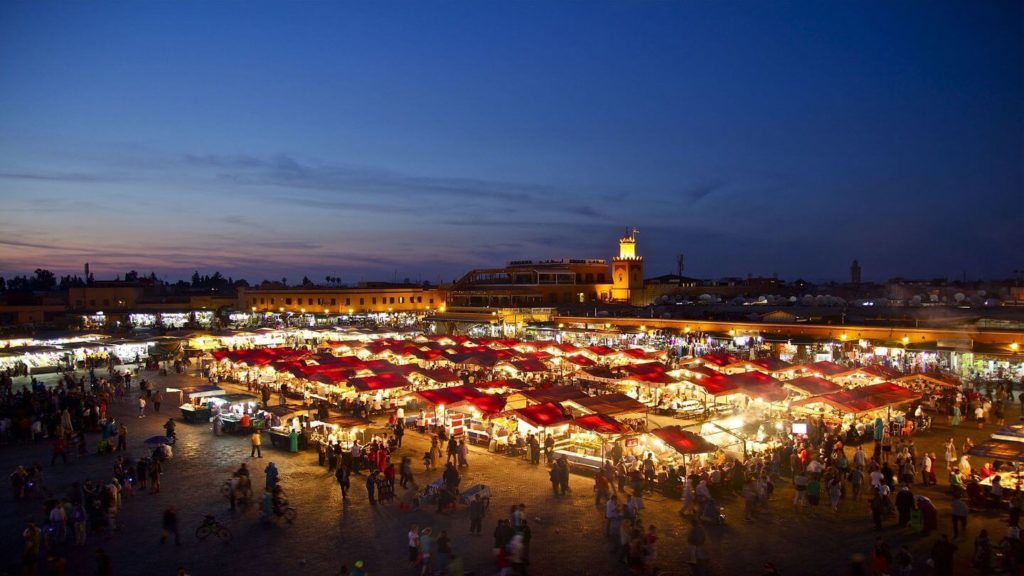

Make your way through the Tizi-n-Tichka Pass to the ‘Red City’ of Marrakesh. It’s a former imperial city with both a medina (old fortified city) and a modern city that are just begging to be explored.
You’ll find the largest traditional souk (market) in the country where you can find traditional souvenirs and learn to haggle. Or head to the Djemaa el Fna Square in the Old Quarter where you’ll meet acrobats, camels and palm readers. You can also visit the gorgeous Bahia Palace, wander the beautiful Majorelle Gardens, and see the mausoleum housing the tombs of the Saadi family who ruled in the 17th century.
Our top Morocco travel tip? Marrakesh gets even better by night. Explore the magical Jemaa el Fna Square for exotic sights and sounds, and enjoy dinner in a traditional Moroccan restaurant, complete with local food, music and entertainment.
Tinghir
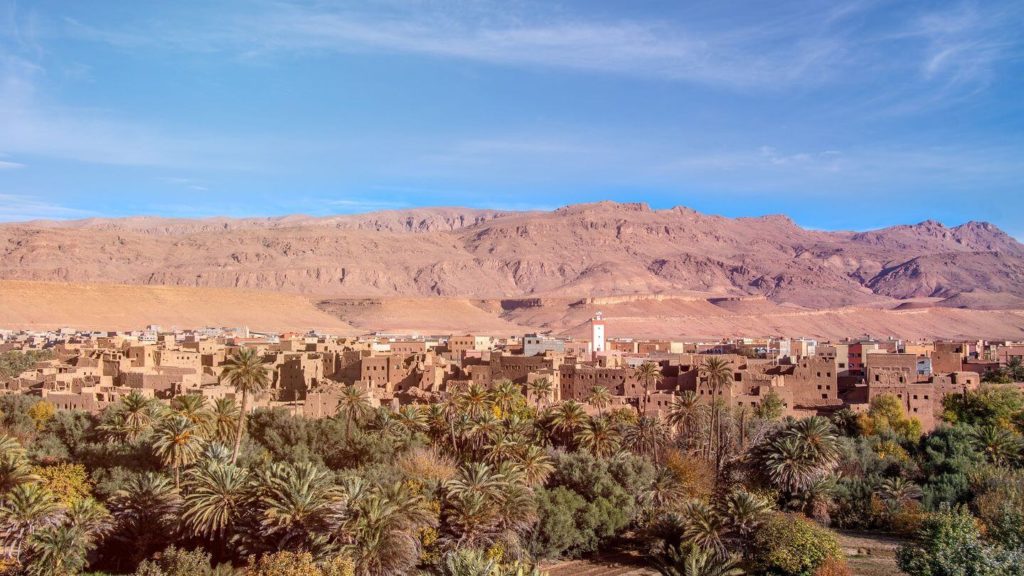

Take a drive through the impressive Todra Gorge and some of the most spectacular mountains in the country to reach Tinghir. It’s one of the most beautiful oases in Morocco and is home to the ruins of the ancient Glaoui palace. Be sure to make it to the top of the ancient kasbah where you’ll enjoy breathtaking views over the whole oasis.
Dades Valley


Follow the route of a thousand kasbahs to the blooming Dades Valley, where you’ll be surrounded by stunning views of the Atlas Mountains. Take a jeep out to the sand dunes of the mighty Sahara Desert and watch the glorious sunset (or sunrise). Meet the Berber locals and learn about their life in the desert. You could even try on a traditional Berber headdress, used by tribesmen to protect themselves from the brutal desert sand and sun.
Aït Ben Haddou


The UNESCO-listed fortified village of Aït Ben Haddou can be found way up in the High Atlas Mountains near the Tizi-n-Tichka Pass. It’s known as a ksar, a group of buildings made from earth and surrounded by high defensive walls and corner towers.
This traditional pre-Saharan village is an extraordinary piece of southern Moroccan architecture. Don’t forget to check out the surrounding Ouarzazate province. You might recognise the desert landscapes from famous movies like ‘Cleopatra’, ‘Gladiator’ and ‘Lawrence of Arabia’.
Chefchaouen
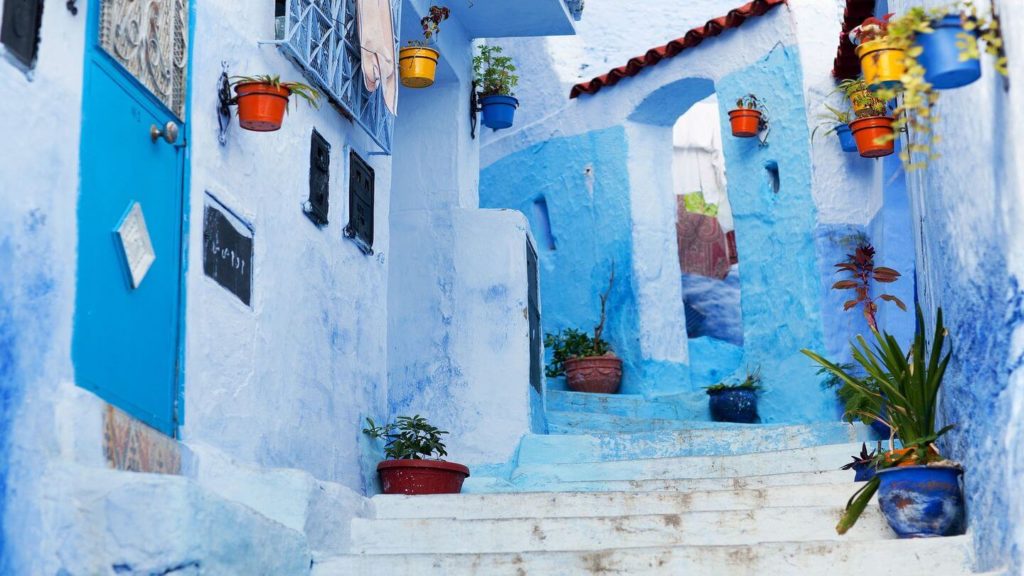

Known as the ‘Blue Pearl of Morocco’, Chefchaouen’s streets are washed in beautiful shades of blue, while the striking Rif Mountains overlook the town. You can spend hours wandering through the blue in this laidback town or take a tour to learn about the rich history and culture.
See the Grand Mosque and marvel at the medina’s stunning natural water spring. Pick up some souvenirs in the traditional souk and visit the Andalusian Gardens where you’ll find the fascinating Kasbah Museum.
RELATED CONTENT: 9 “Classic Blue” travel destinations inspired by 2020’s Pantone colour of the year
Essaouira
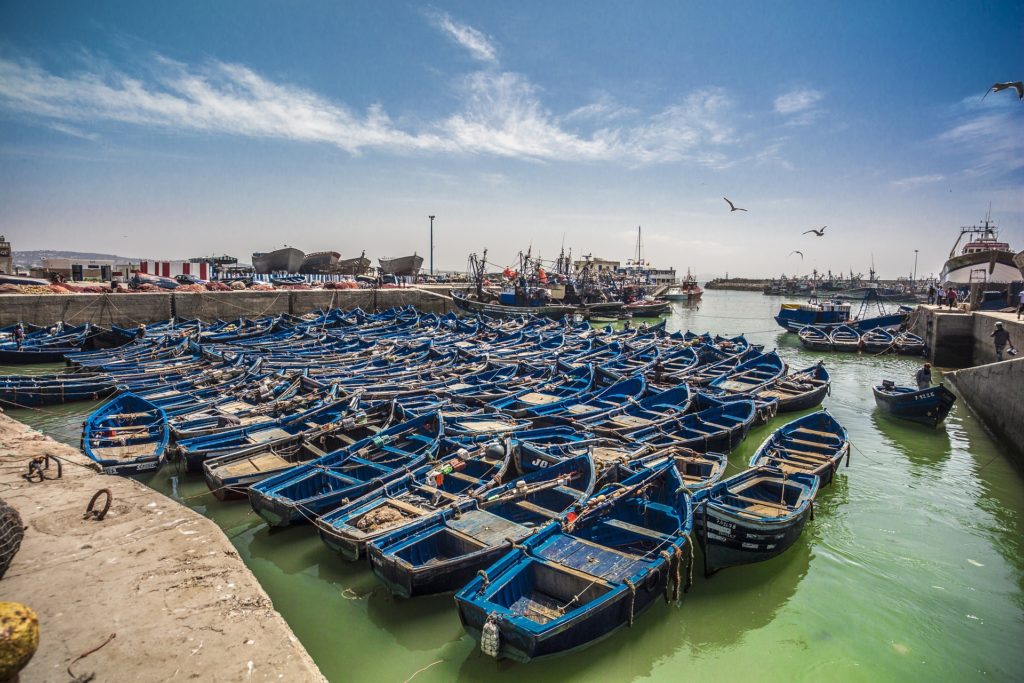

Travel to the relaxing shores of Essaouira, where you can eat tons of delicious seafood and see the iconic blue boats in the harbour. You can also explore the UNESCO-listed medina, Skala fortress and the walled Jewish Quarter. We’ll even take you to a local cooperative where you can sample cosmetics made from traditional ingredients.
Rabat
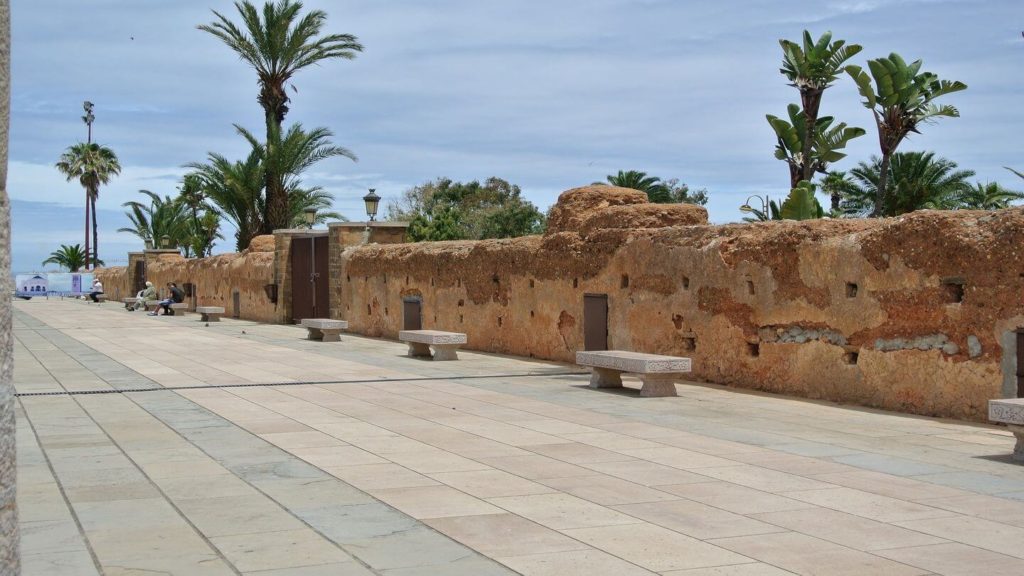

Head to the coastline to the magical capital city, Rabat. There are plenty of incredible sights to see, including the intricate Hassan Tower and the Mausoleum of Mohammed V.
Wander the tranquil Andalusian Gardens and the king’s official residence built from an 18th-century palace. Explore Chellah, a medieval fortified city in the heart of Rabat and learn to haggle in the Old Medina. Take a walk on the beach or walk through the original door of the city in Kasbah des Oudaias, where you’ll find whitewashed streets and gorgeous ocean views.
Foods to try in Morocco
Tagine
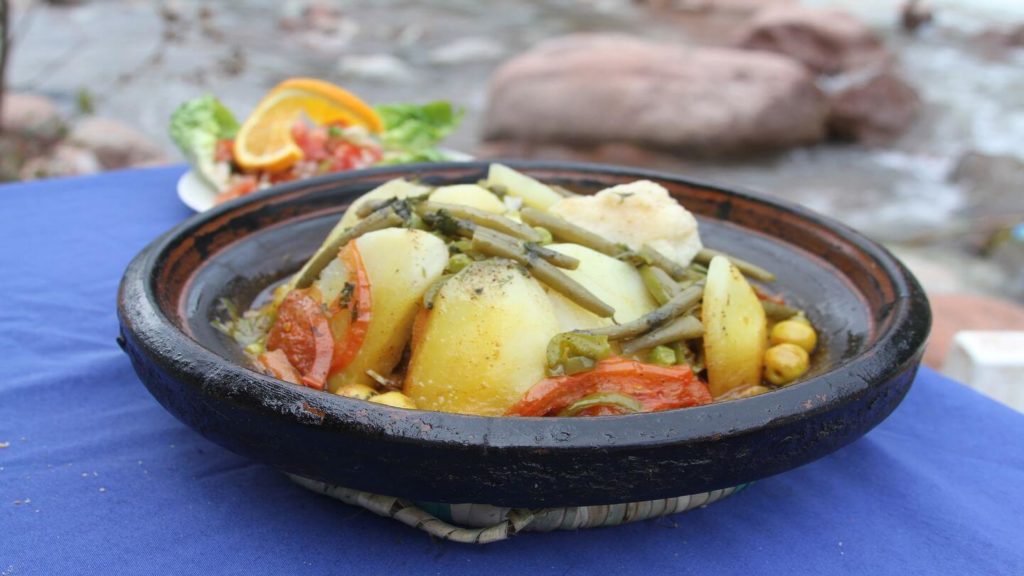

This slow-cooked stew is an icon in Morocco. Tagine gets its name from the traditional conical-shaped clay or ceramic dish it’s cooked in. There are endless types of tagine to try including tender meat (usually lamb, beef or chicken) and veggie-only stews.
Tagine is traditionally eaten straight from the cooking dish. You’ll be served khobz (Moroccan bread) to scoop up every last drop of the delicious stew. One of our top Morocco travel tips is to put down the knife and fork and embrace the hands-on Moroccan way of eating.
Bastilla


Bastilla is Morocco’s tasty answer to the savoury pie and it’s a beloved dish originating from Fez. It’s made from layers of thin pastry layered over a blend of pigeon meat, fried almonds scented with orange flower water, and an omelette spiced with cinnamon, saffron and coriander.
The whole thing is dusted with cinnamon and icing sugar and it’s a truly amazing blend of flavours and textures. Although pigeon meat is the traditional bird of choice, it’s now more common to find chicken in your bastilla.
Couscous
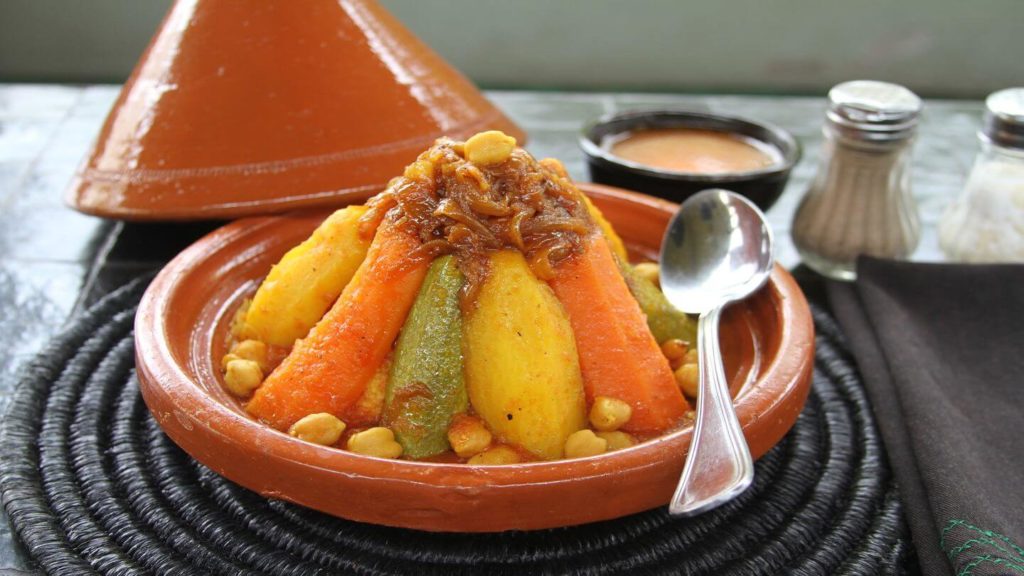

Couscous (also known as seksu) is a staple in Morocco, often served on a super-sized plate for everyone to share. It’s a dish of steamed balls of crushed semolina, and one of the most popular ways to cook it is by steaming it over a stew of meat and vegetables.
The meat is then covered by a pyramid of couscous, and the vegetables are pressed into the sides. Top it off with a sweet raisin preserve, or if you’re dining Berber-style, a bowl of buttermilk.
RELATED CONTENT: Morocco Destination Guide
What to wear in Morocco


Morocco is a conservative country, with more than 90% of its population identifying as Muslims. When it comes to clothing in Morocco, there is no strict dress code, but you will need to dress modestly.
Both men and women should ensure that their clothes cover their shoulders, décolletage, thighs and stomach. Clothes should not be see-through or form-fitting. It is not acceptable for either sex to wear sleeveless tops or short skirts and shorts. You should also avoid wearing or carrying flashy jewellery, watches, handbags or electronics, as this may attract unwanted attention.
For women, you’ll need to wear long, loose-fitting skirts, dresses and pants that cover most of your legs and arms. Women are not required to wear a veil, but you can wear a headscarf if you like. A light scarf is a fantastic accessory for women, as you can use it to cover your head or shoulders when needed, without baking in the summer heat.
If you’re not sure what to wear, just ask your guide or observe what the locals wear and do the same.
Customs and etiquette in Morocco
Religious etiquette
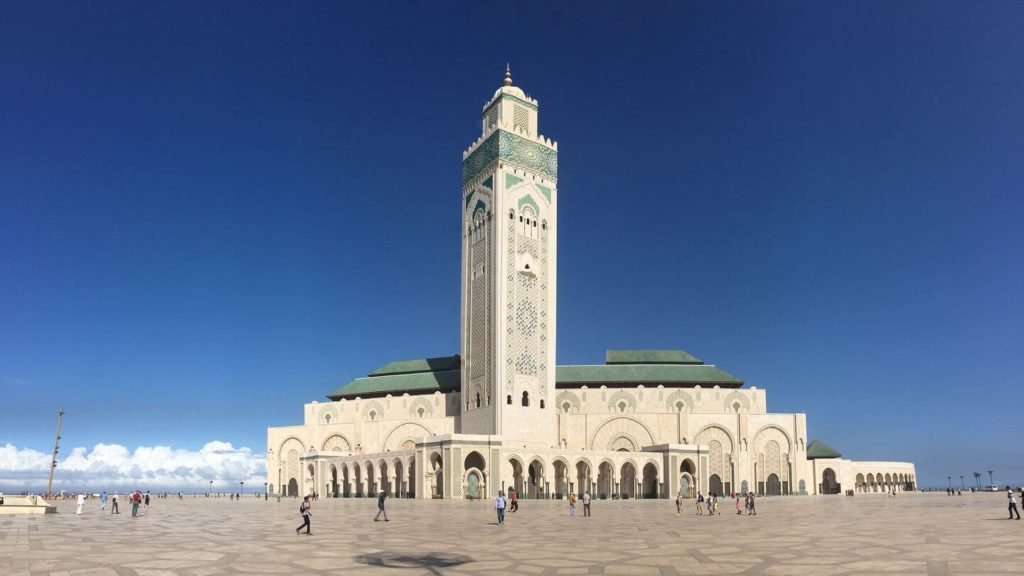

Islam is the state religion of Morocco and disrespecting Islam can be deeply offensive to locals. While it’s okay to ask questions to learn more about the religion, you should avoid offering any opinions that may be controversial.
You’ll also need to respect rules that forbid non-Muslims from entering areas like mosques and shrines. Looking from the outside is fine but you should never get too close to mosques and shrines that don’t allow non-Muslims to enter.
Never disrespect the monarchy
Morocco has lèse–majesté laws that make criticising, mocking or speaking badly about the Moroccan king illegal. It’s also illegal to deface anything with the king’s image. One of our most important Morocco travel tips is to take this seriously, as breaking this law could lead to a jail sentence of up to three years.
Beachwear
It’s okay to wear bikinis and swimsuits at the beach, but you should always cover up when you leave, even if you’re just heading back to your hotel. It doesn’t matter how hot the temperatures get – never wear your swimsuit anywhere other than the beach.
Haggling in the souks


You can find everything in Morocco’s colourful souks, from spices and teas to lamps, pipes and leather. If you can’t resist loading up on souvenirs to take home, you’ll need to learn how to haggle!
Haggling is a huge part of Moroccan culture. There are no set rules but you should always negotiate any first offer to get the best price. Always remember to smile and don’t get too hung up on forcing the price down. Anywhere from 20 to 50% off the starting price is usually a good deal.
Tipping
You should always tip 10 to 15% to service staff in cafes, restaurants, museums, hotels and porters who load your bags. Taxi drivers do not expect a tip, but it is always appreciated.
Gestures
Watch your hands! It’s considered rude to use your index finger to motion a person to approach you. Moroccans call someone over by placing the palm downward and sweeping the hand toward themselves.
Table etiquette
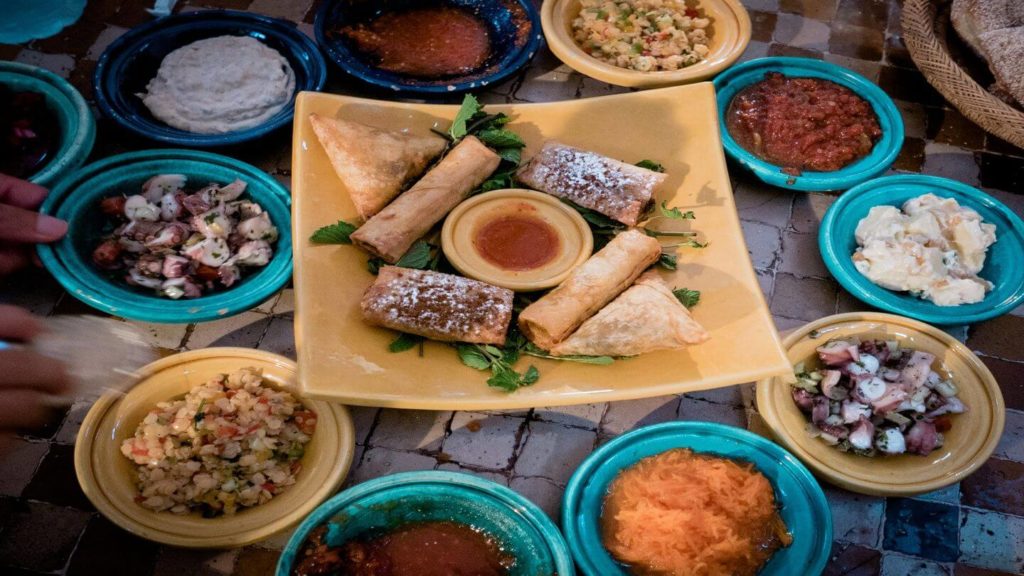

Moroccans eat with their hands rather than a knife and fork and you should give it a go. Be careful to only use your right hand as Muslims only eat with their right hand. The left hand is considered unclean as it’s the hand used for the toilet. The easiest way to do it is to hold a piece of bread between your fingers and use your thumb as a scoop. You’ll be eating like a local in no time!
In the home
If you’re invited to a home, you should take your shoes off before entering the reception rooms. If you’re not sure, just follow your host’s lead! It is also custom to take a gift like tea or sweet pastries.
Common Moroccan phrases
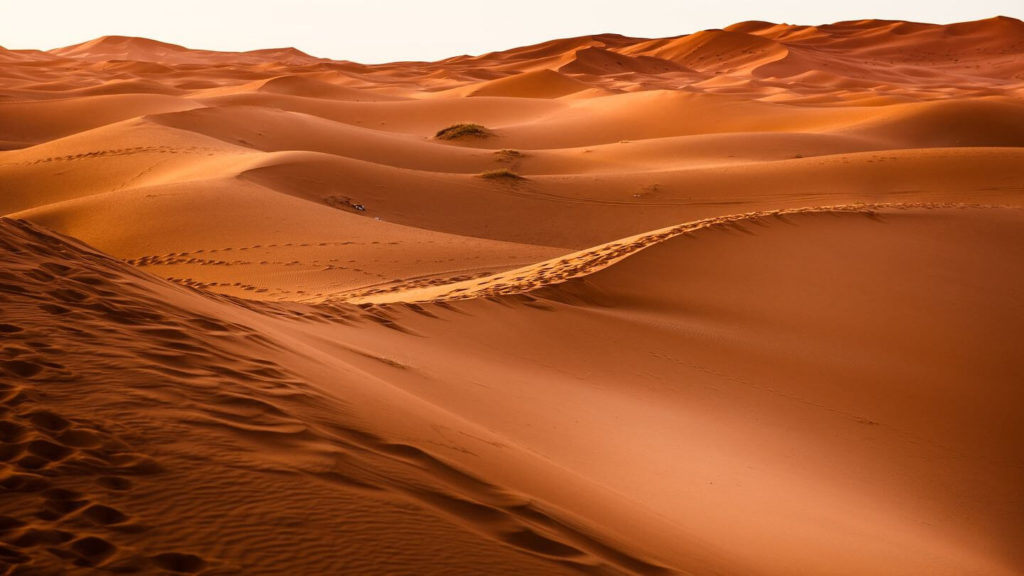

You won’t have much trouble finding English-speaking locals in major tourist areas like Rabat, Fez, Marrakesh and Casablanca. But don’t expect to find as many English-speakers in the more remote areas.
One of our best Morocco travel tips is to learn a few phrases of basic Moroccan Arabic before you go. You’ll be able to communicate a little more easily with the locals, and even if you’re not perfect, your attempts at speaking the local language will be greatly appreciated.
Here are a few common phrases to get you started:
As-salaam Alaykum – Hello (literally translates to ‘peace be with you’).
Sbah l’kheir – Good morning
Labas? – How are you?
GoodIyah – Yes
La – No
Afak – Please
Shukrun – Thank you
Aoudi Afak – Repeat please
Ma’arft – I don’t know/I’m not sure
Kayna…..? – Do you have…?
Atini…. – I would like…
Owni afak – Help me please
Are you dreaming of a trip to Morocco? Do you have any great Morocco travel tips to share? Let us know in the comments below…